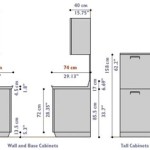Refinishing Stained Kitchen Cabinets: A Comprehensive Guide
Faded, outdated, or damaged kitchen cabinets can detract from the overall aesthetics of your home. Refinishing them is an excellent way to revitalize their appearance and restore their functionality. Here's a comprehensive guide to help you through the essential aspects of refinishing stained kitchen cabinets:
1. Prepare the Cabinets
Thoroughly clean the cabinets using a degreasing cleaner to remove dirt and debris. Remove all hardware, such as knobs, handles, and hinges. Protect the surrounding areas with painter's tape or plastic sheeting. Sand the cabinet surfaces lightly with a medium-grit sandpaper (120-150 grit) to create a smooth base for the new finish.
2. Strip the Old Finish
Use a chemical stripper specifically designed for removing stains and finishes. Apply it to small areas at a time and allow it to dwell for the recommended amount of time. Use a putty knife or scraper to remove the softened finish. Wipe down the surfaces with mineral spirits to remove any remaining residue.
3. Sand and Clean
Sand the cabinets again with a finer-grit sandpaper (220-240 grit) to smooth out the surface and remove any remaining imperfections. Remove all sanding dust using a vacuum cleaner or tack cloth. Ensure the cabinets are completely clean and dry before applying any new finish.
4. Choose a Staining Technique
There are three main staining techniques: brushing, spraying, and wiping. Brushing gives a more rustic look, while spraying provides a smoother, more even finish. Wiping with a rag or sponge allows for more control over the amount of stain applied.
5. Apply the Stain
Stir the stain thoroughly and apply it in the direction of the wood grain. Allow it to penetrate for the recommended amount of time. Use a clean rag to wipe off any excess stain. Apply multiple coats of stain until you achieve the desired intensity.
6. Seal the Finish
After the stain has completely dried, protect it with a clear finish. Polyurethane is a durable and popular choice, available in matte, satin, and glossy finishes. Apply several thin coats of polyurethane, allowing each coat to dry thoroughly before applying the next.
7. Reassemble and Enjoy
Once the finish is completely dry, reassemble the cabinets with the hardware. Enjoy the fresh, updated look of your refinished kitchen cabinets. Remember to maintain the finish by cleaning regularly and applying additional coats of polyurethane as needed.
Remember, refinishing stained kitchen cabinets requires careful preparation, patience, and attention to detail. By following these steps and using high-quality materials, you can transform your kitchen into a space that reflects your personal style and brings years of joy.
Refinishing Kitchen Cabinets Modern Refacing Made Easy Wisewood

How To Refinish Wood Cabinets The Easy Way Love Remodeled

Staining Your Wood Cabinets Darker Young House Love

How To Refinish Wood Cabinets The Easy Way Love Remodeled

How To Make Rustic Kitchen Cabinets By Refinishing Them The Best Stain Color Amanda Katherine

9 Step Guide To Diy Kitchen Cabinet Refinishing

Should I Paint Or Refinish My Kitchen Cabinets

How To Stain Wood Cabinets True Value

The Fast Affordable Way To Upgrade Your Kitchen Cabinet Refinishing

How To Refinish Kitchen Cabinets N Hance
Related Posts








